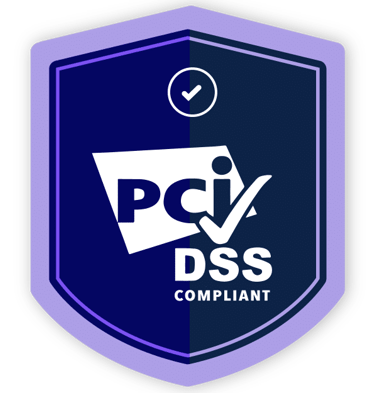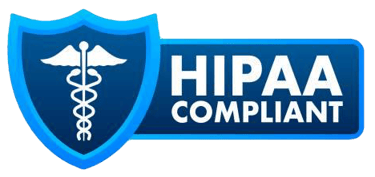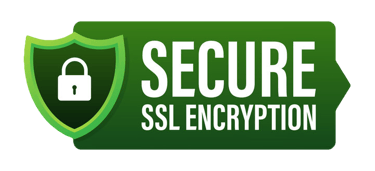Emergency Preparedness Plan Requirements for Home Health Agencies: A Detailed Guide to Survey Readiness
Ensure your home health agency is fully prepared for CMS surveys with a comprehensive Emergency Preparedness Plan that meets all §484.102 Conditions of Participation. Learn key requirements, best practices, and how HealthBridge can help you stay compliant and ready for any emergency.


In today’s unpredictable world, emergency preparedness is not optional—it is a regulatory necessity and a critical component of patient care for Home Health Agencies (HHAs). From natural disasters like earthquakes and wildfires to pandemics, cyberattacks, and utility outages, HHAs must be fully equipped to ensure continuity of care and the safety of both patients and staff.
The Centers for Medicare & Medicaid Services (CMS) established the Emergency Preparedness (EP) Condition of Participation at §484.102 for Medicare-certified Home Health Agencies. Meeting this condition is essential for compliance during surveys, especially during unannounced recertification or complaint surveys. Failure to maintain a compliant Emergency Preparedness Plan (EPP) can lead to condition-level deficiencies, jeopardizing your agency’s certification and reputation.
This article provides an in-depth look at the requirements, examples, and best practices to help your agency develop, implement, and maintain a robust emergency preparedness plan that meets CMS survey standards.
The Four Core Elements of CMS Emergency Preparedness Requirements
CMS outlines four key components of an Emergency Preparedness Program (EPP). HHAs must demonstrate readiness in all of these during a survey:
1. Risk Assessment and Emergency Planning (§484.102(a))
Every HHA must develop an all-hazards risk assessment using a risk-based approach. This includes:
Identification of potential hazards specific to the geographic location (e.g., earthquakes in California, hurricanes in Florida, wildfires, floods, pandemics).
Vulnerability analysis: How many patients are bedbound? Are they oxygen-dependent or electrically dependent?
Community collaboration: Partnering with local emergency management, fire departments, and health departments for planning.
Survey Tip: Be ready to show documentation of your hazard vulnerability analysis (HVA) and updates to your plan annually and after each actual emergency event.
Example: During the COVID-19 pandemic, agencies were expected to modify their risk assessment and include updated infection control procedures in response to the evolving threat.
2. Policies and Procedures (§484.102(b))
Agencies must develop policies and procedures based on the risk assessment. These must address, at minimum:
Evacuation and shelter-in-place procedures
Patient tracking: Ability to track the location of patients and staff during an emergency
Communication with local emergency management
Preserving medical records and ensuring patient privacy (HIPAA compliance)
Backup staffing strategies
Survey Tip: Ensure your procedures are site-specific and patient-specific. Surveyors will look for detailed protocols, not generic templates.
Example: For patients on oxygen, your policy should specify how oxygen will be supplied during a prolonged power outage.
3. Communication Plan (§484.102(c))
A compliant communication plan must include:
Contact information for staff, patients, physicians, suppliers, and emergency officials
Means of communication during outages (e.g., satellite phones, text chains, two-way radios)
A system to share emergency information with federal, state, tribal, regional, and local officials
Documentation of collaborative planning efforts with external partners
Survey Tip: Keep updated communication logs and drill reports. Surveyors often request evidence of successful communication drills.
Example: Maintain a current call tree and assign staff roles in communication chains.
4. Training and Testing Program (§484.102(d))
Your agency must provide:
Initial training to all new staff upon hire
Annual training for all staff on the emergency plan
Annual testing through:
One full-scale community-based exercise (or individual if community-based is not feasible)
One tabletop exercise or workshop that includes a group discussion on emergency protocols
Survey Tip: Maintain sign-in sheets, evaluations, and after-action reports for each training session or drill.
Example: A tabletop exercise simulating a wildfire evacuation should include discussion, evaluation, and updates to the plan based on lessons learned.
Additional CMS Expectations and Updates
CMS requires HHAs to:
Review and update the Emergency Preparedness Plan annually
Integrate Infection Control Procedures into the EPP, especially in light of lessons learned from COVID-19
Keep emergency supplies (like PPE) stocked and accessible
Establish continuity-of-operations plans (COOP), particularly for continuing care to high-risk patients
Common Survey Deficiencies and How to Avoid Them
Outdated contact lists – Always keep contact rosters current.
Generic plans – Tailor all policies to the agency’s actual risks and population.
Incomplete drills – Document all drills thoroughly and conduct meaningful after-action reviews.
No patient-specific emergency plans – CMS requires a plan for each patient, reflecting their clinical and environmental risks.
Lack of staff training records – Keep sign-in sheets, quizzes, or other proof of training.
Patient-Centered Emergency Planning
CMS emphasizes that patients must be:
Informed of their rights to receive care during emergencies
Provided with written information on what to expect during emergencies
Given individualized emergency plans including evacuation plans, equipment needs, and contact information
Best Practices for a Compliant and Functional Emergency Preparedness Program
Conduct quarterly internal audits of emergency supplies, training records, and communication drills.
Assign a dedicated Emergency Preparedness Officer with clear responsibilities.
Use realistic drills that simulate actual threats likely to impact your area.
Integrate technology like cloud-based EHR backups and SMS alert systems.
Regularly review CMS Emergency Preparedness Checklist and CMS Surveyor Worksheets to ensure full alignment.
Partner with HealthBridge: Your Trusted Consulting & Management Firm
Navigating the Emergency Preparedness Condition of Participation requires expert guidance, structured planning, and real-time support. At HealthBridge, we specialize in helping Home Health Agencies:
Develop fully compliant Emergency Preparedness Plans
Conduct and document training and testing exercises
Prepare for CMS surveys with confidence
Build a sustainable culture of safety and readiness
Our consultants are seasoned in both emergency preparedness and home health operations. Whether you’re preparing for your first survey or need a plan overhaul after a deficiency, HealthBridge provides the tools and expertise to ensure you're compliant and protected.
Contact HealthBridge today to schedule your emergency preparedness consultation and take the first step toward stronger compliance and safer care.
Links:
42 CFR §484.102 — Emergency Preparedness (Home Health CoP)
CMS Emergency Preparedness Final Rule — Full Regulation (All Providers)
ASPR Hazard Vulnerability Analysis (HVA) Tools
OSHA Emergency Action Plan Standards







